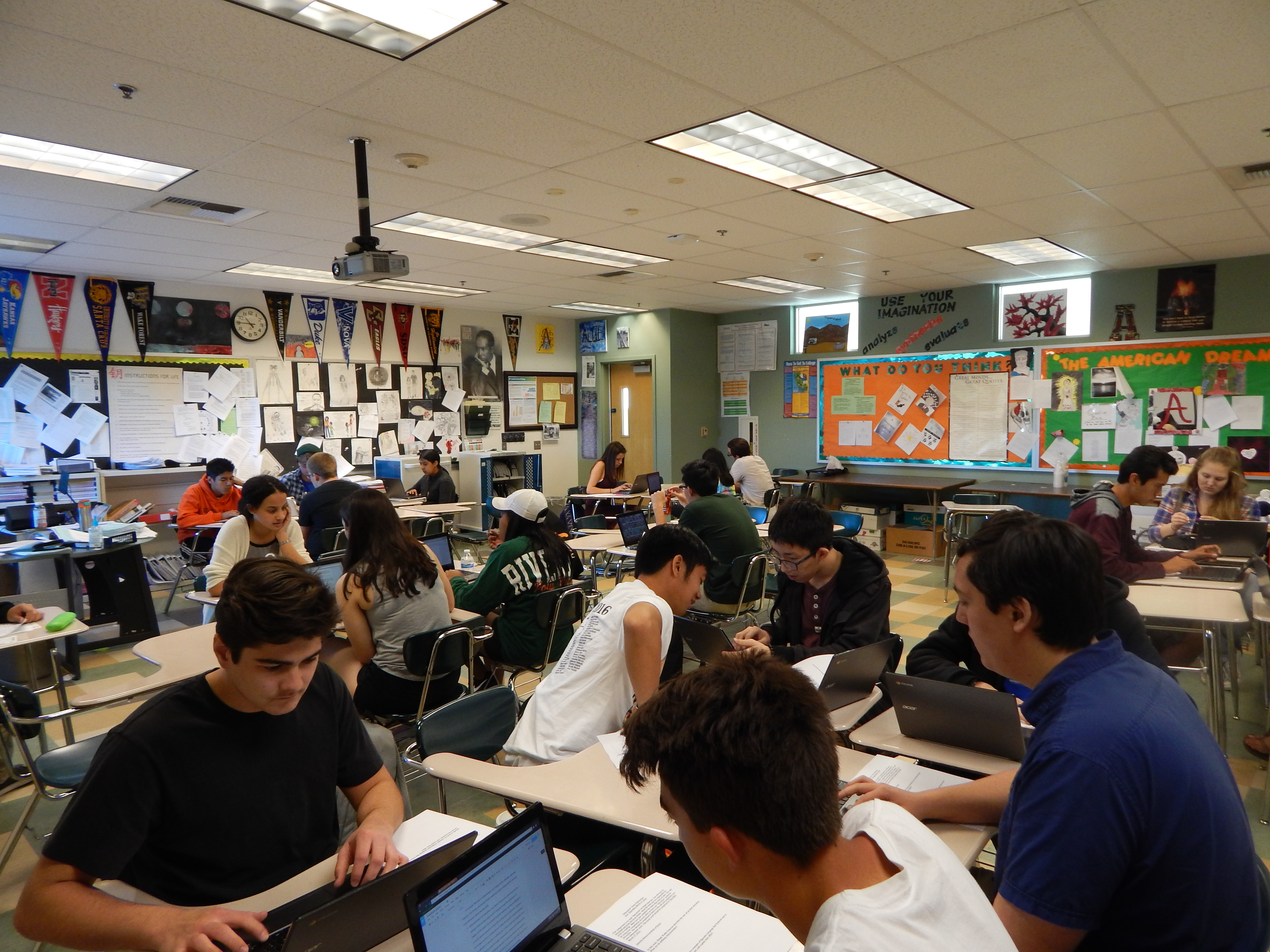ENGAGEMENT: A Harvard survey displays students to be actively disinterested in school.
By Caleb Gonzales, Staff Writer
“Right now […] when you look at the Veterans, the Boomers, the Xers, the Millennials: the most actively disengaged generation right now are [the] Millennials.” –Dr. Michael Roe
Many of those affiliated with Riverside Poly High School or Riverside Unified School District (RUSD) pride themselves on being part of one of the most consistently progressive schools and districts in the nation. For example, RUSD was one of the first districts in the nation to desegregate following the 1960’s Civil Rights Movement.
In recent years, attention has recently shifted from racism to the quality of education in the United States. A common argument for reform states that the current education system was designed almost two centuries ago during the Antebellum Era, and is not only outdated but no longer fits our current purpose for educating. According to Poly’s Advanced Placement (AP) US History teacher Mrs. Adrianne Dubuisson, this was an age, preceding the Civil War, which introduced less voting restrictions concerns began to rise over the nation being run by uneducated voters, and public school was created to answer these concerns.
But that was almost two centuries ago, and the population is different. With a more educated community of voters, a new problem has surfaced. According to Harvard’s Making Caring Common (MCC) project, we now have an uninspired and disengaged population. On December 7, 2016, Poly administered an engagement survey to students and staff to assess this problem on campus.
This survey, which is a result of Poly’s recent partnership with the MCC, had four main focuses: student engagement, student hope for the future, entrepreneurial spirit and financial literacy. Student engagement measures the spirit students have for their future, hope measures student excitement for the future, entrepreneurial spirit measures student motivation to step up and change the future and financial literacy measures student preparedness for the real world. These are all essential components students need for success in the workforce.
The survey was administered across the US as well, and the results consistently demonstrate that student engagement reaches its peak in students’ freshman year. It then drops again during their sophomore year and junior year before spiking during their senior year. This trend continues through hope and entrepreneurial aspiration, but is broken with financial literacy, which declines with the freshman class then rises consistently for the other three.
This issue is the prime reason for programs and ideas such as personalized learning or problem based learning. Personalized learning, theoretically, gives teachers a more customized environment to work with. Problem based learning seeks to immediately apply the material taught in class and answer the age old question, “When will I ever use this?” These concepts attempt to depart from the classic methods of teaching and create a student body that is not only less stressed out, but more engaged and less likely to abandon their education.
On the other side, the staff seem to be generally more engaged than the students. A version of the survey also measured the staff’s engagement. Of the students, 31 percent are actively engaged, 37% are not engaged and 32% are actively disengaged. The staff results, by contrast, are 32%, 58% and 10% respectively. Although there is a much lower actively disengaged percentage among the staff, there have been few attempts to reach out to the staff in this regard. MCC has. The actively disengaged statistic for the staff has shown a downward trend based upon a past survey, falling from 14%. Because the teachers are the cornerstone of student success, this downward trend, if it continues, may consequentially draw in more student engagement in the long run and further encourage educational reform.

